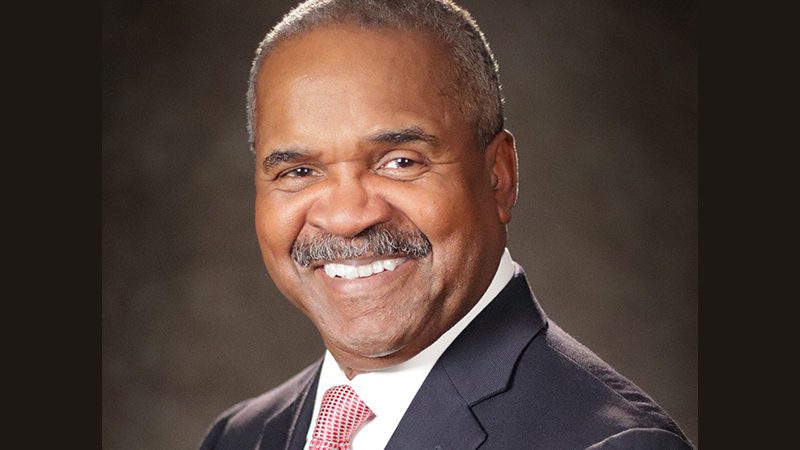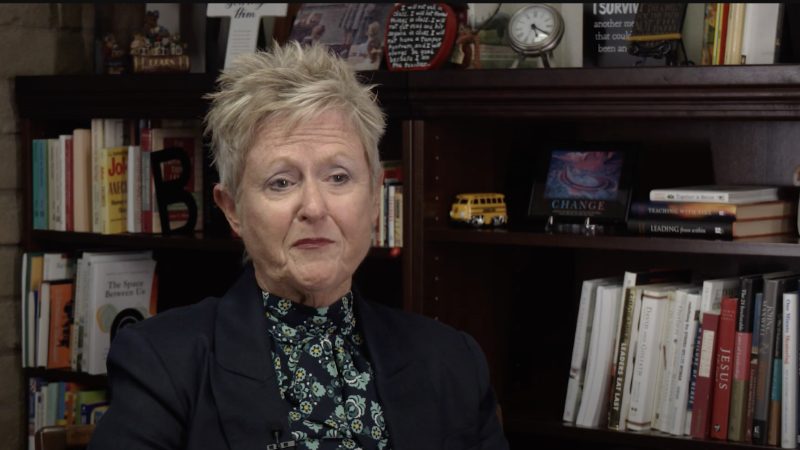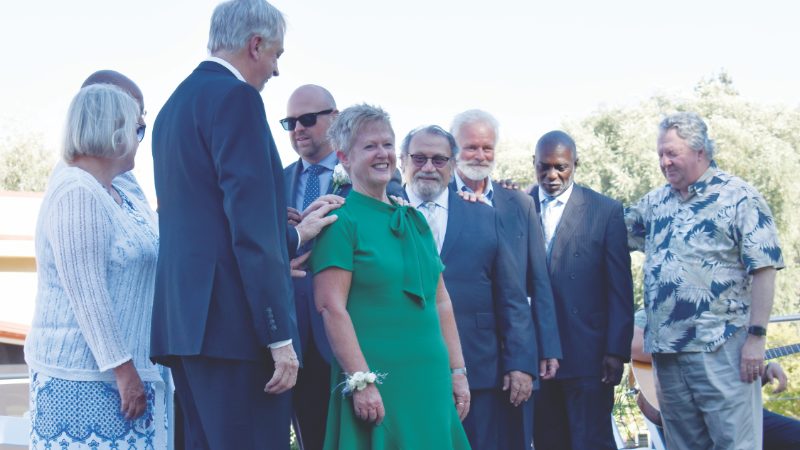
So when God comes in the flesh as Jesus, the Son of man, what does He do? He spends His time presenting His mission as one of healing.
Sadly, I must say that this fundamental fails the “Jesus test.” There’s no mention of Jesus, even as we discuss the nature of humanity and the God who took on our nature (John 1).
The official statement takes in the creation of Adam and Eve in the image of God, the Fall, and the consequences of sin and evil in this world. It talks about God reconciling the world to Himself and the restoration of the image of God. We are to love Him and one another and care for the environment.
All well and good. But the whole demonstration of God coming to be with us, to live in this world, to “pitch His tent among us” (that’s what John 1:14 says in the original Greek) is surely an essential part of examining our nature and how God saves. The essential question is: What went wrong with humanity? How did we end up with our nature and its predisposition to sin? And then, how does God deal with all of this?
As someone once observed, was it a question of eating the wrong fruit? Was it Adam and Eve’s deliberate act of disobedience? Was it the breaking of rules?
Or was it the far more deep-seated problem of believing the serpent and distrusting God? The result was not so much a problem of being in legal trouble with God but needing to be healed from the destructive results of sin.
So when God comes in the flesh as Jesus, the Son of man, what does He do? He spends His time presenting His mission as one of healing. Even back in the Old Testament, God identifies Himself as the Lord who heals (Exodus 15:26). God is the only one who can change our broken, sinful nature and remake us into what we were meant to be.
As human beings after the Fall, we are born in sin (Psalm 51:5). We cannot save ourselves; we cannot heal ourselves from the damage of sin. “In Adam all die,” since “death came through a man.” But through God’s amazing, transforming grace, “in Christ all will be made alive” (1 Corinthians 15:21-22).1
Without divine intervention, the fatal disease of sin will kill us. “Sin entered the world through one man, and death through sin, and in this way death came to all people, because all sinned” (Romans 5:12). This fact is at the heart of our human nature. The solution therefore is intricately joined to Jesus’ mission to save and heal us.
It’s significant that the Greek word for “salvation,” sozo (σῴζω), is the same as that for “healing.” Take one example:
In his Gospel, Dr. Luke shows a progression of concepts of healing in the story of the woman who suffered from bleeding. Luke 8:43 says that no one had been able to heal her. The word used for “heal” is therapeuo (θεραπεύω), from which we get “therapeutic.” She had not been able to get any therapeutic healing.
In verse 47, the woman explains that as soon as she touched the hem of Jesus’ cloak, she had been healed. This time the word Luke uses for “healed” is iaomai (ἰάομαι), meaning “to be cured of an illness.” She had been totally cured of her sickness, a complete healing.
But when Jesus speaks to her in verse 48, Luke again uses a different word for “healing,” sozo. As mentioned above, this is the same word meaning “salvation.” So, in essence, Jesus is saying that she has been “salvation-healed” (in other words, she experienced salvation as she was healed). In this case, the NIV translates it as “your faith has healed you.”
Even more significantly, the Greek phrase used for “your faith has healed you” is identical to Jesus’ words to the woman who anointed Him in the previous chapter. However, here the word sozo is translated “save”: “your faith has saved you” (Luke 7:50).
Coincidence? Hardly. Not only in this illustrative story from Luke, a physician, but in the whole ministry of Jesus, we see God dealing with the problem of our fallen human nature. Salvation is healing.
In Matthew 1:21 the angel tells Joseph that Jesus will save people from their sins. Once again, the word for save is sozo, so the phrase can also be translated “Jesus will heal people from their sins.”
When in Luke 5 the paralyzed man is lowered down through the roof, Jesus doesn’t say “be healed.” Instead, He says, “Friend, your sins are forgiven” (Luke 5:20). For the religious teachers and Pharisees, preoccupied, worried, and obsessed with their legal system of salvation, this was outrageous. So Jesus tells the sick man to get up and walk, to prove that healing and forgiveness go hand in hand.
While we do need to recognize our human nature, what is more important is the cure—the One who came here as one of us, who died at our hands to change us and to transform our nature into one like His. Although each one of us was born into this sinful world, Jesus has a plan and purpose for all of us, no matter the sin and sickness in our lives. Jesus, our Savior and our Healer, will continue to love us and be with us because we were created for His glory. Jesus said, “And I, when I am lifted up from the earth, will draw all people to myself” (John 12:32). He wants us—you and me—to come to Him so our human nature can be completely healed.
_____________________________
Jorge Soria, retired, was executive vice president of the Pacific Union Conference. He currently pastors the Riverside Spanish church.
1 Unless otherwise indicated, all Scripture quotations are from the New International Version.
Creencia fundamental # 7 La naturaleza de la humanidad
Por Jorge Soria

Entonces, cuando Dios viene en la carne como Jesús, el Hijo del Hombre, ¿qué hace? Dedica su tiempo a presentar su misión como una misión de curación.
Tristemente, debo decir que esta creencia falla en la «prueba de Jesús». No se menciona a Jesús, incluso cuando hablamos de la naturaleza de la humanidad y del Dios que asumió nuestra naturaleza (Juan 1).
La declaración oficial abarca la creación de Adán y Eva a imagen de Dios, la Caída y las consecuencias del pecado y la maldad en este mundo. Habla de Dios reconciliando al mundo consigo mismo y de la restauración de la imagen de Dios. Debemos amarlo y a los demás y cuidar el medio ambiente.
Todo muy bien. Pero toda la demostración de que Dios viene a estar con nosotros, a vivir en este mundo, a «plantar su tienda entre nosotros» (eso es lo que dice Juan 1:14 en el griego original) es seguramente una parte esencial del examen de nuestra naturaleza y de cómo Dios salva. La pregunta esencial es: ¿Qué falló en la humanidad? ¿Cómo terminamos con nuestra naturaleza y su predisposición al pecado? Y después, ¿cómo lidia Dios con todo eso?
Como alguien observó una vez, ¿era cuestión de comer la fruta equivocada? ¿Fue un acto deliberado de desobediencia por parte de Adán y Eva? ¿Fue el incumplimiento de las reglas?
¿O era el problema mucho más profundo de creer en la serpiente y desconfiar de Dios? El resultado no fue tanto un asunto de estar en problemas legales con Dios, sino la necesidad de ser sanado de los resultados destructivos del pecado.
Entonces, cuando Dios viene en la carne como Jesús, el Hijo del Hombre, ¿qué hace? Dedica su tiempo a presentar su misión como una misión de curación. Incluso en el Antiguo Testamento, Dios se identifica a sí mismo como el Señor que sana (Éxodo 15:26). Dios es el único que puede cambiar nuestra naturaleza quebrantada y pecaminosa y rehacernos en lo que estamos destinados a ser.
Como seres humanos después de la Caída, nacemos en pecado (Salmo 51:5). No podemos salvarnos a nosotros mismos; no podemos sanarnos a nosotros mismos del daño del pecado. «En Adán todos mueren», ya que «la muerte vino por medio de un hombre». Pero a través de la asombrosa gracia transformadora de Dios, «en Cristo todos serán vivificados» (1 Corintios 15:21-22).1
Sin la intervención divina, la enfermedad fatal del pecado nos matará. «El pecado entró en el mundo por un hombre, y la muerte por el pecado, y en esto la muerte vino a todos los hombres, porque todos pecaron» (Romanos 5:12). Ese hecho está en el corazón de nuestra naturaleza humana. Por lo tanto, la solución está estrechamente unida a la misión de Jesús de salvarnos y sanarnos.
Es significativo que la palabra griega para «salvación», sozo (σῴζω), es lo mismo que el de «curación». Veamos un ejemplo.
En su Evangelio, el Dr. Lucas muestra una progresión de conceptos de curación en la historia de la mujer que sufría de flujo. Lucas 8:43 dice que nadie había sido capaz de curarla. La palabra usada para «sanar» es therapeuo (θεραπεύω), de la cual obtenemos «terapéutico». No había sido capaz de obtener ninguna curación terapéutica.
En el versículo 47, la mujer explica que tan pronto como tocó el borde del manto de Jesús, había sido sanada. Esta vez la palabra que Lucas usa para «sanada» es iaomai (ἰάομαι), que significa «curarse de una enfermedad». Había sido totalmente curada de su enfermedad, una curación completa.
Pero cuando Jesús le habla en el versículo 48, Lucas nuevamente usa una palabra diferente para «sanidad»: sozo. Como se mencionó anteriormente, esa es la misma palabra que significa «salvación». Así que, en esencia, Jesús está diciendo que ella ha sido «sanada por la salvación» (en otras palabras, ella experimentó la salvación mientras era sanada). En este caso, la NVI lo traduce como «tu fe te ha sanado».
Aún más significativamente, la frase griega utilizada para «tu fe te ha sanado» es idéntica a las palabras de Jesús a la mujer que lo ungió en el capítulo anterior. Sin embargo, aquí la palabra sozo se traduce como «salvar»: «tu fe te ha salvado» (Lucas 7:50).
¿Coincidencia? Difícilmente. No solo en esta ilustrativa historia de Lucas, un médico, sino en todo el ministerio de Jesús, vemos a Dios lidiando con el problema de nuestra naturaleza humana caída. La salvación es sanación.
En Mateo 1:21 el ángel le dice a José que Jesús salvará a su pueblo de sus pecados. Una vez más, la palabra para salvar es sozo, por lo que la frase también se puede traducir como «Jesús sanará a las personas de sus pecados».
Cuando en Lucas 5 el hombre paralítico es bajado por el techo, Jesús no dice «sé sanado». En cambio, dice: «Amigo, tus pecados te son perdonados» (Lucas 5:20). Para los maestros religiosos y los fariseos, preocupados, preocupados y obsesionados con su sistema legal de salvación, eso era indignante. Así que Jesús le dice al enfermo que se levante y camine, para demostrar que la curación y el perdón van de la mano.
Si bien necesitamos reconocer nuestra naturaleza humana, lo que es más importante es la cura: aquel que vino a este mundo como uno de nosotros, que murió en nuestras manos para cambiarnos y transformar nuestra naturaleza en una tal como la suya. Aunque cada uno de nosotros nació en este mundo pecaminoso, Jesús tiene un plan y un propósito para todos nosotros, sin importar el pecado y la enfermedad en nuestras vidas. Jesús, nuestro Salvador y nuestro Sanador, continuará amándonos y estando con nosotros porque fuimos creados para su gloria. Jesús dijo: «Y yo, cuando sea levantado de la tierra, atraeré a todos a mí mismo» (Juan 12:32). Él quiere que nosotros, tú y yo, vayamos a él para que nuestra naturaleza humana pueda ser sanada por completo.
_____________________________
Jorge Soria, jubilado, fue vicepresidente ejecutivo de la Pacific Union Conference. Actualmente es pastor de la iglesia hispana de Riverside, California.
1 A menos que se indique lo contrario, todas las citas de las Escrituras pertenecen a la Nueva Versión Internacional.





